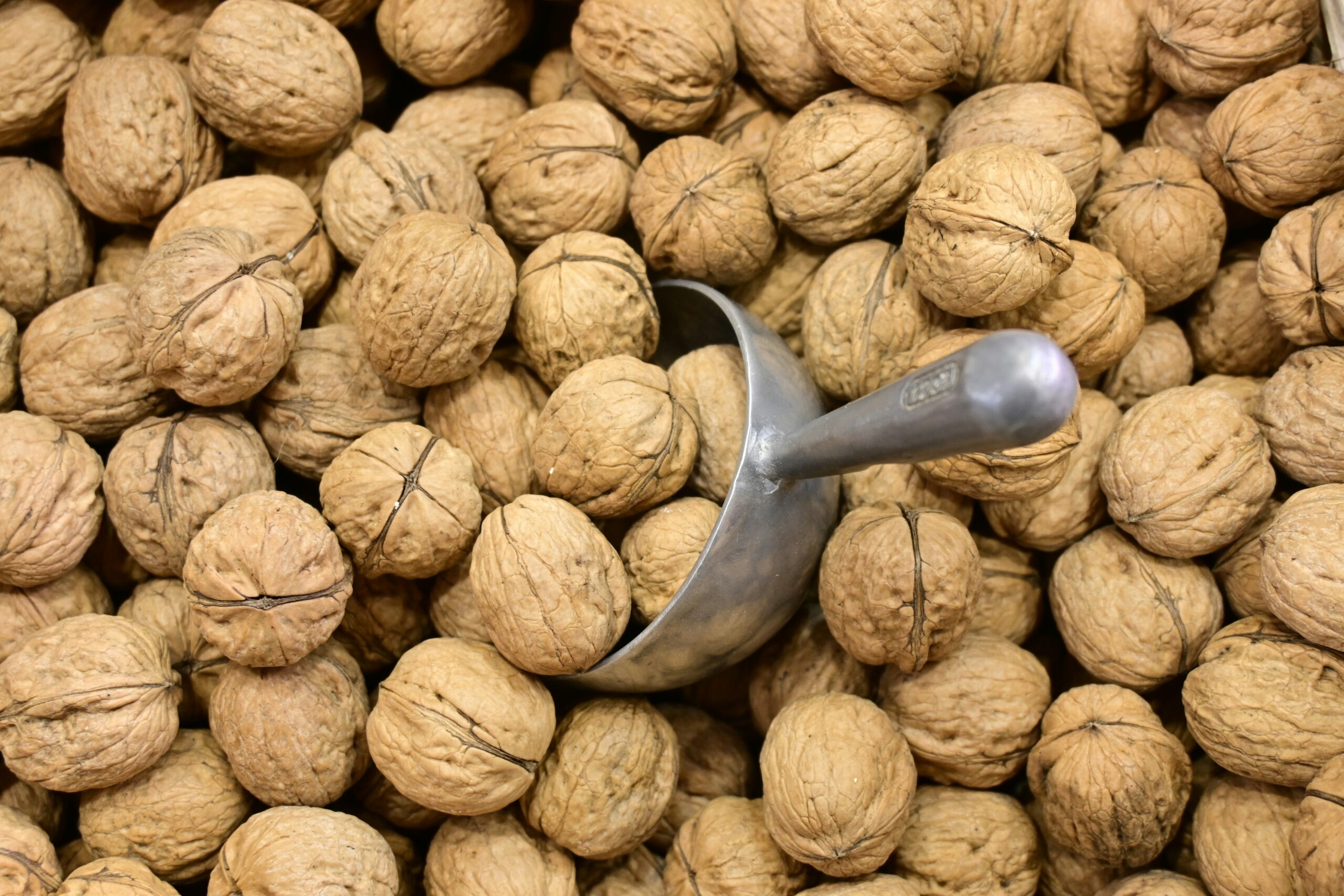
Walnuts are a nutritious and economically significant tree nut, widely traded and consumed globally. Here’s an in-depth look at walnuts as a commodity:
1. Production & Key Growing Regions
Top Producers (2023/24 Estimates)
-
China (~50% of global production, mainly in Yunnan, Xinjiang, Shaanxi)
-
United States (California accounts for ~99% of U.S. production)
-
Iran
-
Turkey
-
Chile (leading Southern Hemisphere producer)
-
Ukraine & India (growing markets)
-
Climate Requirements: Walnut trees need well-drained soil, cold winters, and warm summers.
2. Types of Walnuts
-
English Walnut (Juglans regia): Most common commercial variety (thin shell, mild flavor).
-
Black Walnut (Juglans nigra): Stronger flavor, thicker shell (less commercial, used in niche products).
-
White Walnut (Butternut): Rare, used regionally.
3. Major Uses & Demand Drivers
Food Industry (Primary Market)
-
Snacking: Raw, roasted, salted, or flavored walnuts.
-
Bakery & Confectionery: Used in cakes, cookies, chocolates.
-
Dairy Alternatives: Walnut milk (growing due to vegan trends).
-
Oil: Cold-pressed walnut oil (culinary & cosmetic uses).
Health & Nutrition
-
High in omega-3 fatty acids, antioxidants, and protein.
-
Linked to heart health and brain function (boosts demand in health-conscious markets).
Industrial & Other Uses
-
Wood: High-quality walnut wood for furniture & veneer.
-
Dye: Walnut shells used for natural dyes.
4. Global Trade & Market Trends
Leading Exporters
-
United States (California, major exporter to EU & Asia)
-
Chile (exports counter-seasonally to Northern Hemisphere markets)
-
Ukraine (growing exporter to EU & Middle East)
-
France (high-quality walnuts for EU market)
Leading Importers
-
European Union (Germany, Spain, Italy)
-
Middle East (UAE, Turkey)
-
Asia (India, China, Japan, South Korea)
Price Influencing Factors
-
Weather Conditions (frost, drought affect yields).
-
Labor Costs (walnuts are hand-harvested).
-
Trade Policies (tariffs, export restrictions).
-
Competition from Other Nuts (almonds, pecans, cashews).
5. Price & Futures Market
-
Not as heavily traded as almonds, but prices are tracked in wholesale markets.
-
USDA & INC (International Nut & Dried Fruit Council) provide pricing benchmarks.
-
Prices vary by quality (light halves vs. pieces).
6. Challenges in the Walnut Industry
-
Labor-Intensive Harvesting: Requires manual shaking & collection.
-
Climate Sensitivity: Late frosts damage blossoms.
-
Pests & Diseases: Codling moth, walnut blight.
-
Storage Issues: Walnuts can turn rancid if not stored properly (high oil content).
7. Future Outlook
-
Growing Demand: Rising health awareness in Asia & Middle East.
-
Organic & Premium Markets: Consumers willing to pay more for high-quality walnuts.
-
Sustainability Focus: Water-efficient farming methods (drip irrigation).
-
New Product Innovations: Walnut-based snacks, milk, and protein powders.
Would you like specific data on:
-
Current walnut prices?
-
Investment opportunities (futures, ETFs, stocks)?
-
Comparison with other nuts (almonds, pecans, cashews)?
